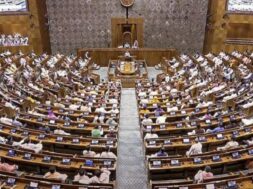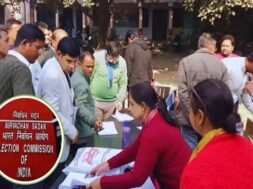
Manas Dasgupta
NEW DELHI, Sept 6: The defence minister Rajnath Singh held a meeting with his Iranian counterpart Brigadier General Amir Hatami, who is also Iran’s Armed Forces Logistics minister, and exchanged views on ways to take forward bilateral cooperation and discussed the regional security issues, including peace and stability in Afghanistan.
An official spokesman of the union government here said on Sunday that the meeting took place in a cordial and warm atmosphere with both the leaders emphasizing on the age-old cultural, linguistic and civilizational ties between India and Iran.
The spokesman said the meeting was held at Hatami’s request when Singh was on a transit halt at Tehran on his way to New Delhi from Moscow where he went to attend the Shanghai Cooperation Organisation meeting and on its sideline also discussed the Indo-China border situation with his Chinese counterpart General Wei Fenghe.
The failure of the two sides to break the stalemate in eastern Ladakh though agreeing to settle the row through “discussions and negotiations” even while blaming each other for the impasse preceded by Indian army’s success in calling the Chinese bluff on the Rezang La ridgeline on August 29-30, is believed to have convinced the Indian authorities the need to prepare for a long haul in Ladakh with clear cut directions to the front-line troops not to yield to any Chinese intimidation.
While both the military and diplomatic channels are open between the two countries, the Indian Army riposte in the last week of August must have had a sobering effect on the adversary with the situation attaining criticality at the Rezang La ridgeline in Chushul sector.
Though a key element of the Chinese military strategy had always been to use media for a psychological warfare, the situation report to the PLA headquarters in Beijing on August 30 military moves must have made the Western Theatre Command realise the mood of Indian Army’s specialized troops and the armour deployed in the sector. The new Indian military posture was aimed at repelling any PLA move to unilaterally change the alignment of Line of Actual Control (LAC) in pursuit of its 1960 claim and not just wait and watch before making the first move.
The Indian position on the Ladakh border was strongly conveyed by Rajnath Singh to his Chinese counterpart and the same was expected to be reiterated by External Affairs Minister S Jaishankar when he meets his Chinese counterpart on the same platform on September 10. There is a strong possibility of the meeting between India-China Special Representatives on the boundary issue later if Beijing still remained committed to the bilateral peace and tranquility agreements. The situation on ground is that China has increased the PLA strength by 60 per cent since Galwan flare-up on June 15 while its leaders talk about peace.
According to China watchers, the PLA aggression would continue till the US Presidential elections in November. They believed that the Chinese push in Ladakh from Galwan valley to Pangong Tso was possibly part of Chinese strategic positioning to punish India for its perceived close relationship with US. “The climatic conditions in Ladakh in October will ensure that troops only fight for their survival rather than fight against the adversary with polar temperatures and killer winds. The Chinese posture will also depend on whether there is a change of regime in US and what will be its policy towards Beijing,” guessed a senior Indian government official.
The China watchers also did not rule out that that the PLA aggression in Ladakh could also be part of its preparation for 100 years of Chinese Communist party next year, where the middle kingdom would be show-cased as a new global power with Xiaokang (moderately prosperous) society and a modern socialist country.
It is clearly evident that the Chinese did not anticipate the Indian Army reaction in Ladakh as well as the political, military, diplomatic and economic cost of land between Finger 4 and Finger 8 relief features that PLA occupied by perfidy in May 2020.














